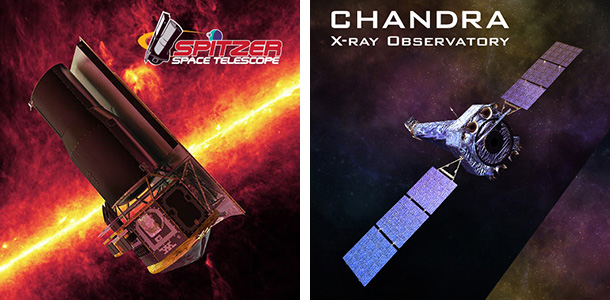Support Spitzer & Chandra Monitoring of Sgr A* in July 2016
Steven Willner Center for Astrophysics | Havard & Smithsonian
The galactic center supermassive black hole is by far the closest example for studying the mechanisms of accretion onto such objects. Sgr A* is the fluctuating source of electromagnetic radiation derived from the accretion flow or perhaps a related jet. The variable radiation has been detected at radio, submillimete, near-infrared, and X-ray wavelengths. Recent numerical general relativistic magnetohydrodynamic flare models across the electromagnetic spectrum indicate that variability may be connected to a tilted inner disk or to the black hole gravitationally lensing a bright spot in the accretion flow. Different models predict different amplitudes of flaring, and observations can therefore distinguish between strong-mean-magnetization accretion and weak magnetization. Disentangling the power source and emission mechanisms of the flares is a central challenge to our understanding of the Sgr A* accretion flow.
The Spitzer Space Telescope and Chandra X-ray Observatory have allocated time for simultaneous monitoring of Sgr A*, in July 2016. The plan is to have two campaigns lasting 24 hours each. The objectives of the Chandra and Spitzer observations are (1) to probe the accretion physics of Sgr A* on event-horizon scales via multiwavelength monitoring and (2) to detect any effect of the object G2 on Sgr A*. Only long-duration, continuous, multiwavelength observations can achieve a comprehensive view of the dominant emission process(es) and quantify the physical properties near the event horizon. Theoretical models are increasing in physical sophistication, and our study will provide essential constraints for the next generation of models.
Further details are available on the Spitzer/Chandra webpage. We invite others interested in monitoring Sgr A* at any wavelength to consider scheduling observations during the Spitzer/Chandra monitoring in order to enhance the value of all data sets.


